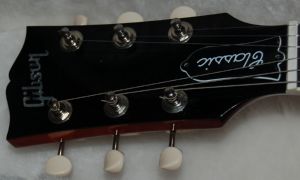Here's a little more info.
Inside of the neck is a bowed metal rod which is threaded on one end and it is used to apply tension to the neck.
The strings are trying to pull the neck forward towards the strings.
The truss rod applies opposing tension.
The purpose of the truss rod is to keep the neck straight.
On the Gibsons, at least, there's a plastic cover up by the tuning pegs which is held on with two phillips screws. This one says Classic.

Behind that cover is the truss rod adjuster (which is simply a nut which screws onto the threaded portion).
Pick up your guitar with the body at your head and sight down the side of the neck like you're looking down an arrow.
Any bowing will be evident.
You gently tighten the truss rod to pull the neck back (away from the strings), you loosen the nut to pull the neck towards the strings.
This rod is really, really delicate - if you don't have a light touch do not adjust it.
If you break that rod you're screwed. Two words: gentle, gentle. The rod breaks you're screwed (did I mention you're screwed)?
Going to lighter strings you'll want to loosen the rod, heavier gauge you'd be tightening the rod.
Temperature and humidity will change the straightness as well.
Your instrument might take an allen wrench at the base of the neck up by the pick ups instead of having a nut under a cover on the headstock. If so, same thing - tighten to pull the neck back, loosen to bring the neck forward.
It's best to do a small adjustment and then check it the following day.
Some guitars are easy, some necks can be difficult.
When you get it right they play really nice.